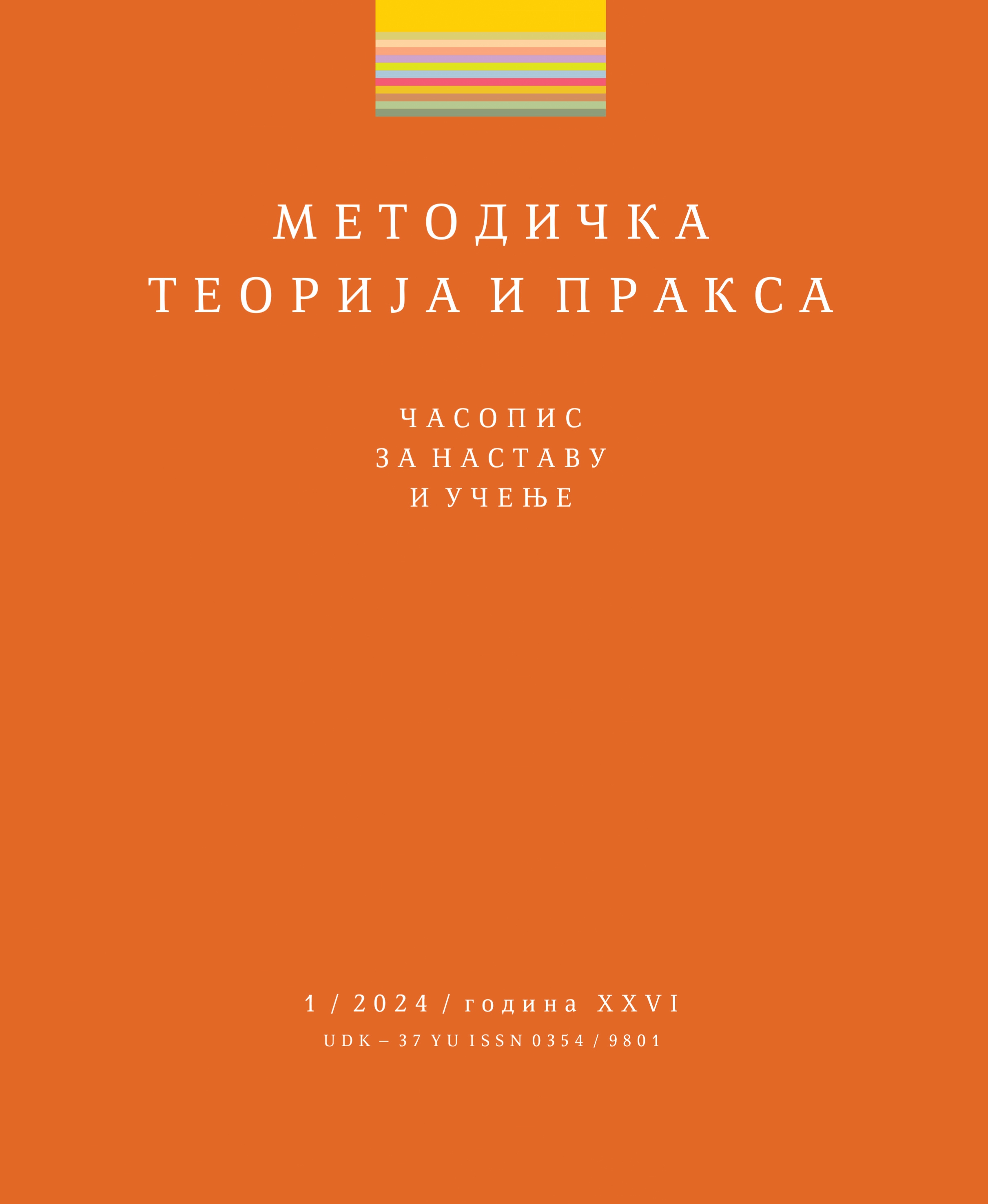INNOVATIONS IN TEACHING: INTEGRATION OF STEAM AND PHYSICAL EDUCATION FOR PRIMARY SCHOOL STUDENTS
Abstract
The paper explores the possibilities of integrating STEAM activities with physical education for students of younger grades of elementary school. The goal of this research is to explore the possibilities of integrating STEAM activities with physical education in the education of younger elementary school students. The focus is on identifying the advantages of this approach, analyzing the challenges we face during implementation, and proposing recommendations for overcoming those challenges. The methods of analysis, synthesis and generalization were used in the research. Different approaches to integrating STEAM activities with physical education for junior elementary school students provide numerous benefits, including improving student health and development, encouraging hands-on experience and creativity through the application of science and math concepts in physical activities, and developing social skills through teamwork. However, we face challenges such as limited time for physical education, the need for careful planning of integration into the existing curriculum, lack of resources and the need to develop new methods of learning assessment. To overcome the challenges of integrating STEAM activities with physical education, careful planning of class schedules to ensure sufficient time for comprehensive activities, as well as provision of additional resources such as teacher training and necessary equipment and materials, is critical. Also, it is important to continuously monitor and adapt the curriculum in order to effectively integrate scientific and mathematical concepts into physical activities, while at the same time preserving the basic elements of physical education.
References
Alghamdi, A. A. (2023). Exploring early childhood teachers’ beliefs about STEAM education in Saudi Arabia. Early Childhood Education Journal, 51(2), 247-256.
Anisimova, T., Sabirova, F., & Shatunova, O. (2020). Formation of design and research competencies in future teachers in the framework of STEAM education. International Journal of Emerging Technologies in Learning (iJET), 15(2), 204-217.
Bassachs, M., Cañabate, D., Nogué, L., Serra, T., Bubnys, R., & Colomer, J. (2020). Fostering critical reflection in primary education through STEAM approaches. Education sciences, 10(12), 384.
Beni, S., Ní Chróinín, D., & Fletcher, T. (2019). A focus on the how of meaningful physical education in primary schools. Sport, Education and Society, 24(6), 624-637.
DeJarnette, N. K. (2018a). Implementing STEAM in the early childhood classroom. European Journal of STEM Education, 3(3), 18.
DeJarnette, N. K. (2018b). Early childhood STEAM: Reflections from a year of STEAM initiatives implemented in a high-needs primary school. Education, 139(2), 96-112.
Erol, M., & Erol, A. (2023). Reflections of STEAM education on children according to early childhood and primary school teachers. International Journal on Social and Education Sciences, 5(3), 493-506.
Gallahue, D. L., & Donnelly, F. C. (2007). Developmental physical education for all children. Human Kinetics.
Hilppö, J., Vartiainen, J., & Silander, P. (2022). Perspectives on the Finnish early years STEAM education: Reflecting on the avant-garde. In Play and STEM education in the early years: International policies and practices (pp. 219-235). Cham: Springer International Publishing.
Jamil, F. M., Linder, S. M., & Stegelin, D. A. (2018). Early childhood teacher beliefs about STEAM education after a professional development conference. Early childhood education journal, 46, 409-417.
Jess, M., Keay, J., & Carse, N. (2016). Primary physical education: A complex learning journey for children and teachers. Sport, Education and Society, 21(7), 1018-1035.
Kwan, R., & Wong, B. T. M. (2021). Latest advances in STEAM education research and practice: a review of the literature. International Journal of Innovation and Learning, 29(3), 323-339.
Li, J., Luo, H., Zhao, L., Zhu, M., Ma, L., & Liao, X. (2022). Promoting STEAM education in primary school through cooperative teaching: A design-based research study. Sustainability, 14(16), 10333.
Pangrazi, R. P., & Beighle, A. (2019). Dynamic physical education for elementary school children. Human Kinetics Publishers.
Safitri, N. A. (2022). The STEAM approach to Improve 21st Century Skills in Elementary Schools. Kalam Cendekia: Jurnal Ilmiah Kependidikan, 10(2), 227-233.
Shatunova, O., Anisimova, T., Sabirova, F., & Kalimullina, O. (2019). STEAM as an innovative educational technology. Journal of Social Studies Education Research, 10(2), 131-144.
Spotswood, F., Wiltshire, G., Spear, S., Morey, Y., & Harris, J. (2021). A practice theory approach to primary school physical activity: opportunities and challenges for intervention. Critical Public Health, 31(4), 392-403.
Su, J., Yim, I. H. Y., Wegerif, R., & Wah Chu, S. K. (2024). STEAM in early childhood education: a scoping review. Research in Science & Technological Education, 1-17.
Tanaka, C., Tanaka, M., & Tanaka, S. (2018). Objectively evaluated physical activity and sedentary time in primary school children by gender, grade and types of physical education lessons. BMC public health, 18, 1-10.
Voicu, C. D., & Matei, F. L. (2021). STEAM approach in primary school and preschool education. Journal of Education, Society and Multiculturalism, 2(1), 14-39.
Wahyuningsih, S., Nurjanah, N. E., Rasmani, U. E. E., Hafidah, R., Pudyaningtyas, A. R., & Syamsuddin, M. M. (2020). STEAM learning in early childhood education: A literature review. International Journal of Pedagogy and Teacher Education, 4(1), 33-44.

